Tomatoes are one of the most beloved and rewarding crops for home gardeners. Juicy, flavorful, and versatile, they can elevate any meal, whether eaten fresh in salads, cooked into sauces, or preserved for later use. But while tomato plants are relatively easy to grow, one factor plays a critical role in their success: watering.
Getting the watering schedule right can mean the difference between thriving, productive plants and stressed, low-yielding ones. Too much water can lead to root rot and diluted flavors, while too little can cause blossom end rot, cracking, and poor fruit development. In this guide, you’ll learn how to create the best watering schedule for tomatoes to maximize their health, boost harvests, and enjoy a season full of delicious fruits.
Why Watering Matters for Tomatoes
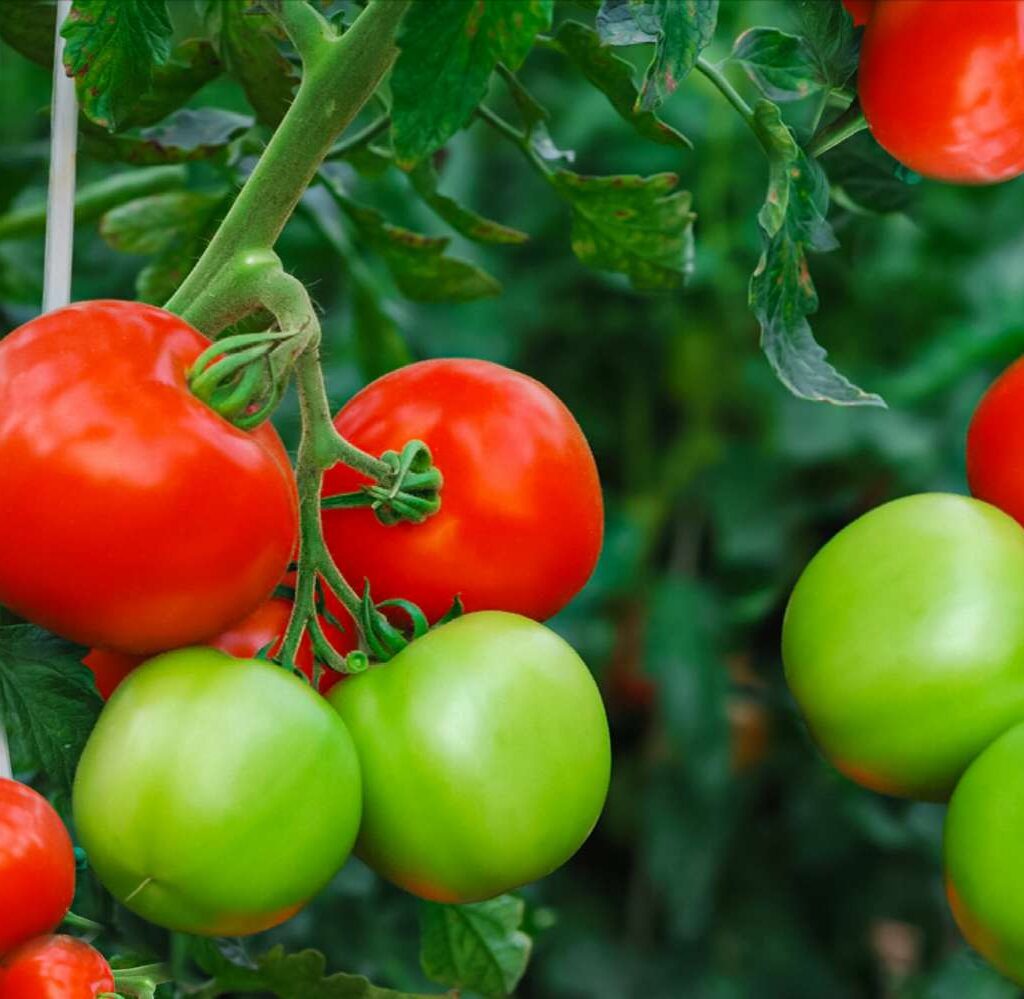
Tomato plants are heavy feeders and require consistent moisture to grow strong stems, lush foliage, and plump, juicy fruits. Since their root systems stretch deep into the soil, they rely on steady hydration to absorb nutrients effectively. Water also helps regulate temperature, transport minerals, and maintain turgor pressure in the leaves and stems.
An inconsistent watering routine leads to stressed plants, which may result in:
- Blossom end rot: Dark, sunken spots on the bottom of tomatoes caused by calcium deficiency due to uneven watering.
- Fruit cracking: Splits in tomato skins when sudden watering follows a dry spell.
- Reduced yield: Stressed plants produce fewer flowers and fruits.
- Weak flavor: Overwatering can dilute sugars, leading to watery, bland tomatoes.
This makes watering one of the most crucial aspects of tomato care.
Factors That Influence Tomato Watering
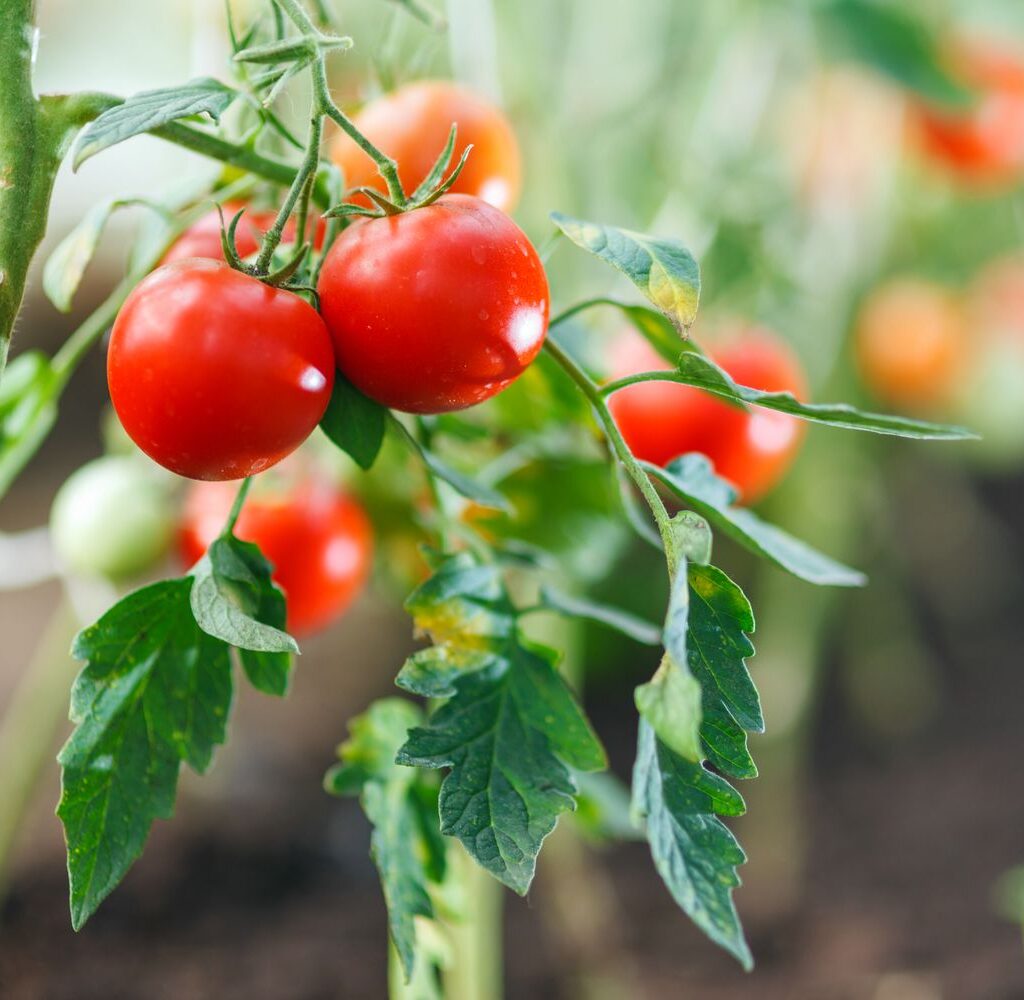
Before setting a schedule, it’s important to understand the factors that affect how much and how often your tomatoes need water.
- Climate – Hot, dry, and windy conditions increase evaporation and water needs, while cooler, humid climates require less frequent watering.
- Soil type – Sandy soil drains quickly and requires more frequent watering, whereas clay soil retains moisture longer.
- Stage of growth – Young seedlings need lighter, frequent watering, while mature fruiting plants require deep, less frequent watering.
- Growing method – Container-grown tomatoes dry out faster than those in garden beds, needing more frequent attention.
- Mulching – A layer of mulch helps conserve soil moisture, reducing the frequency of watering.
The Best Watering Schedule for Tomatoes
While no single schedule works for every gardener, there are general guidelines you can follow and adjust based on your conditions.
1. Seedling Stage (0–4 Weeks After Transplanting)
- Water daily or every other day.
- Keep the soil moist but not soggy, as young roots are still shallow.
- About 1 cup of water per seedling per day works in most conditions.
2. Vegetative Growth Stage (4–8 Weeks)
- Switch to deep watering every 2–3 days.
- Provide about 1–1.5 inches of water per week, which translates to 1 gallon per plant in each session.
- Focus on watering at the soil level to avoid wetting leaves, which can cause fungal diseases.
3. Flowering and Fruit Development Stage (8 Weeks Onwards)
- Increase to 2–3 gallons of water per plant, twice a week.
- Maintain consistent soil moisture to prevent blossom end rot and fruit cracking.
- Avoid alternating between dry and soggy conditions, as this stresses the plants.
4. Peak Summer Heat
- In very hot weather (above 32°C / 90°F), check soil daily.
- Water every day or even twice a day for container plants.
- Early morning watering is best, as it reduces evaporation and keeps plants hydrated throughout the day.
Best Practices for Watering Tomatoes
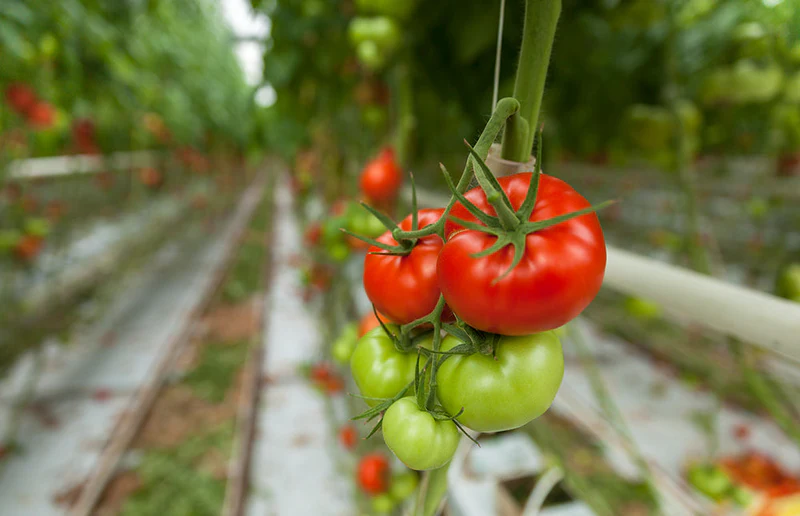
To ensure your watering routine delivers the best results, follow these proven tips:
1. Water Deeply, Not Lightly
Shallow watering encourages roots to stay near the surface, making plants more vulnerable to drought. Instead, water slowly and deeply so moisture penetrates 6–8 inches into the soil.
2. Use Mulch
Apply 2–3 inches of organic mulch (straw, leaves, or grass clippings) around the base of the plants. This locks in moisture, prevents soil from drying too fast, and keeps roots cool.
3. Avoid Overhead Watering
Wet leaves create a breeding ground for fungal diseases like blight. Use drip irrigation, a soaker hose, or water directly at the soil level.
4. Water Early in the Day
Morning watering allows excess moisture to evaporate from leaves and provides plants with hydration before the hottest part of the day.
5. Check Soil Moisture
Before watering, stick your finger 2–3 inches into the soil. If it feels dry, water; if it’s moist, wait another day. A moisture meter can also help you stay precise.
Watering Tomatoes in Containers vs. Garden Beds
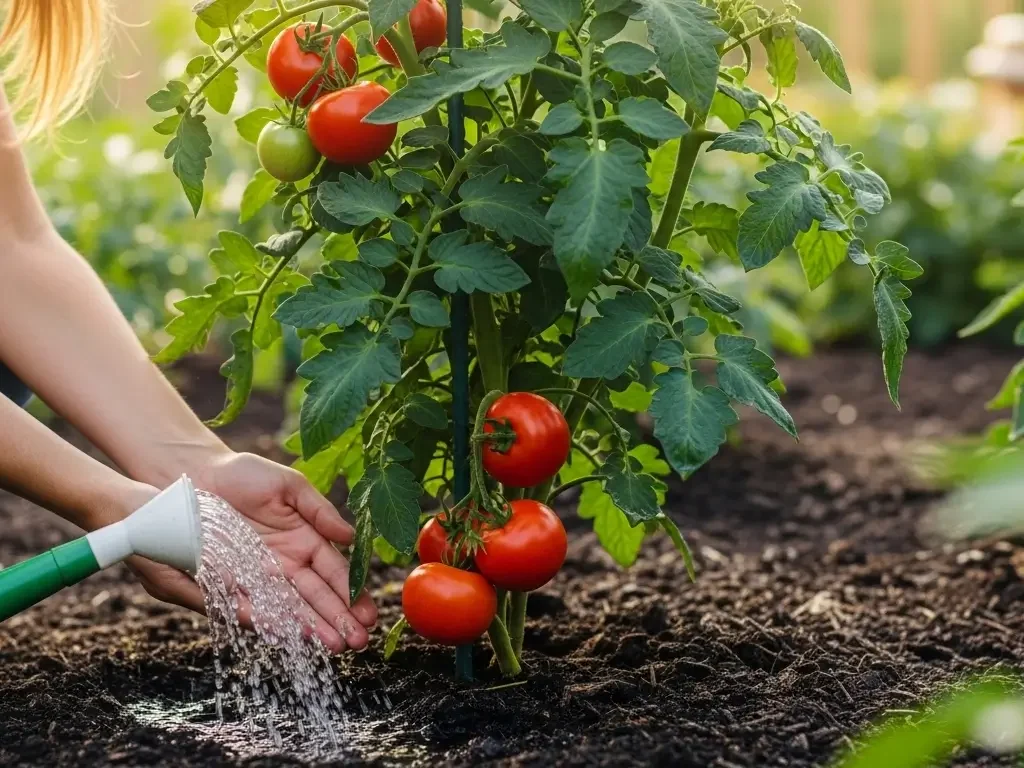
- Containers: Pots dry out faster due to smaller soil volume and more exposure to heat. Expect to water once a day, and twice daily in hot weather. Ensure pots have good drainage.
- Garden Beds: Water less frequently but more deeply. Mulching helps reduce evaporation and maintains steady soil moisture.
Common Watering Mistakes to Avoid
- Irregular watering – Skipping days and then overwatering causes stress and fruit problems.
- Too much water at once – Flooding the soil can drown roots and wash away nutrients.
- Watering leaves – Increases risk of fungal infections.
- Evening watering – Prolonged leaf wetness overnight encourages disease.
Signs You’re Watering Correctly
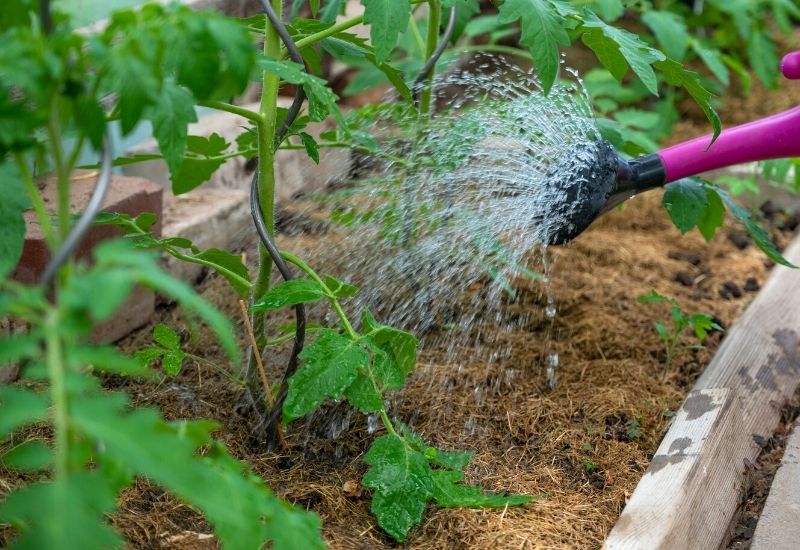
Healthy tomato plants should:
- Have deep green, firm leaves (not drooping or yellowing).
- Produce flowers steadily during their growing stage.
- Develop fruits without cracks or dark spots.
- Taste rich and sweet rather than watery.
Conclusion
Watering tomatoes properly is a balancing act, but once mastered, it greatly boosts harvests and improves fruit quality. By following a structured schedule—watering seedlings lightly, providing deep water as plants mature, and increasing hydration during fruiting—you’ll ensure your tomato plants stay healthy and productive all season long.
Remember: consistency is key. Combine the right watering schedule with good soil, mulching, and disease prevention, and you’ll be rewarded with baskets of crisp, juicy tomatoes bursting with flavor.
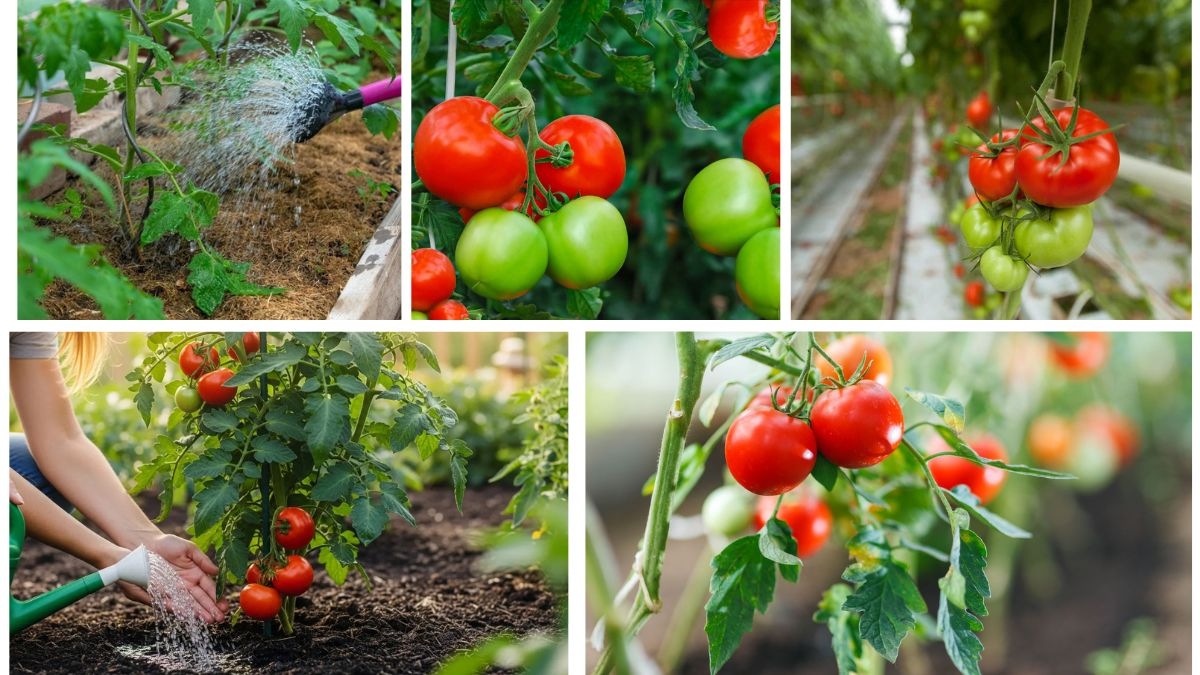
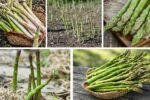
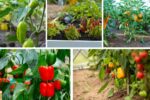


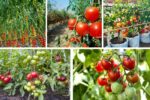
Leave A Comment